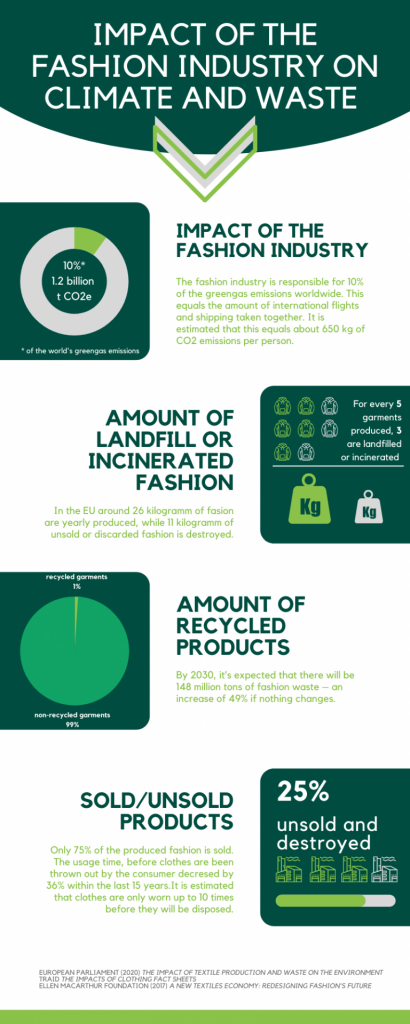By Jessica Johnson and Teresa Schachtl | 05.05.2022

Just a month ago, the EU published a new proposal, the Ecodesign for more sustainable product regulation, demanding more transparency towards the products life cycle and forcing companies towards more sustainability. However, brands and stores that already focus primarily on fair and sustainable fashion ironically seem to be struggling with new consumer trends towards more environmentally friendly shopping.
One of the biggest polluters of the environment is the fashion industry, it is one of the leading sectors when it comes to greenhouse emissions and water usage. In order to stop the climate change, adjustments to the ways of producing and consuming fashion need to be set in place. The new EU proposal seems to be especially targeting the big players in the fashion and furniture industry. The question is, how independent stores and brands that are already considering the environment deal with and are opinionated about such regulations

Valérie Berckman, founder of the eponymous store as well as a cosmetic shop in Brussels, tells her story about having to close both her shops. She states that sustainable fashion is on the brink of dying out, as more and more stores in the Belgian capital have to shut down. Worsened through the global pandemic, these businesses are not only struggling with the rise of online-shopping, but also with another sustainable fashion trend – vintage and second-hand shopping. Less and less consumers choose to buy the more pricey, fair produced goods, and rather look through thrift-shops to find new old clothing.
From 2020 to 2021 second-hand sales, for example in the UK, grew around 27% – as a reason to buy second-hand most people refer to sustainability. In the online-shopping world the platform Vinted leads the field, looking at the downloadrates of shopping apps in Germany in 2022, Vinted is the most successful when it comes to fashion. Shops and platforms like this will most likely also not be affected by requirements, in the future, such as proposed by the Ecodesign – since these only cover products that are newly placed on the market. This will make it even easier for second-hand shops to succeed more than conscious fashion brands. Even though Berckman’s business model can’t survive anymore, she sees the trend to more sustainable fashion overall positive – and she now focuses on clothes made from the textile-waste from bigger brands.
Infographic about the climate impact of the fashion industry (Teresa Schachtl, 2022)